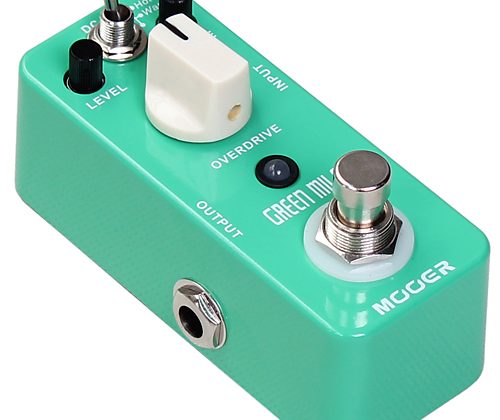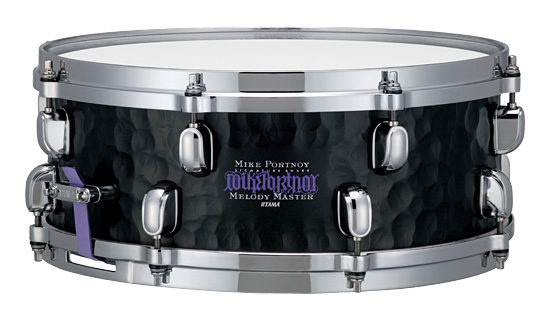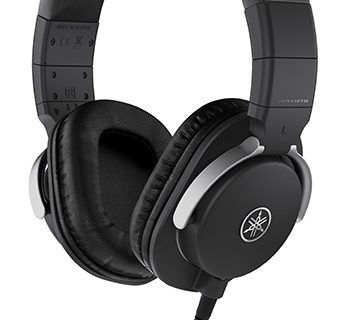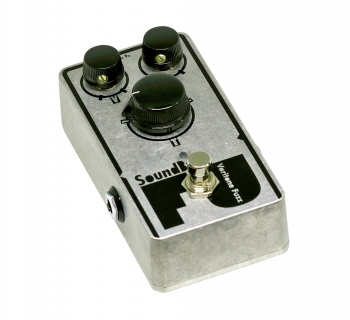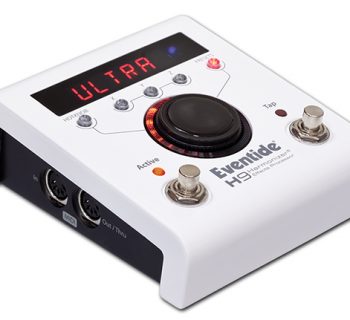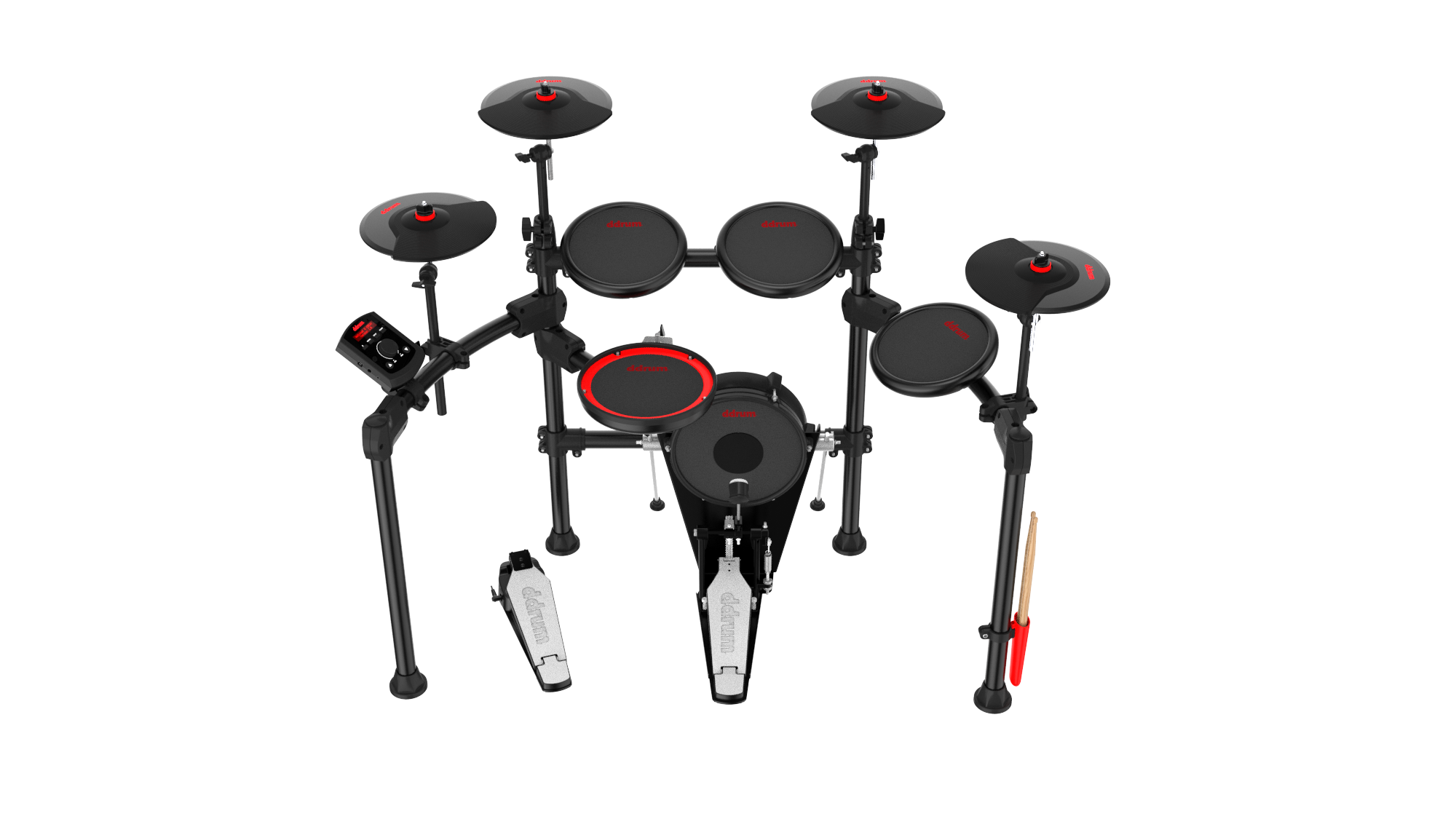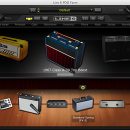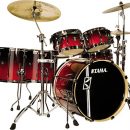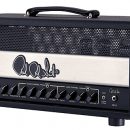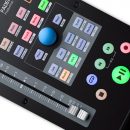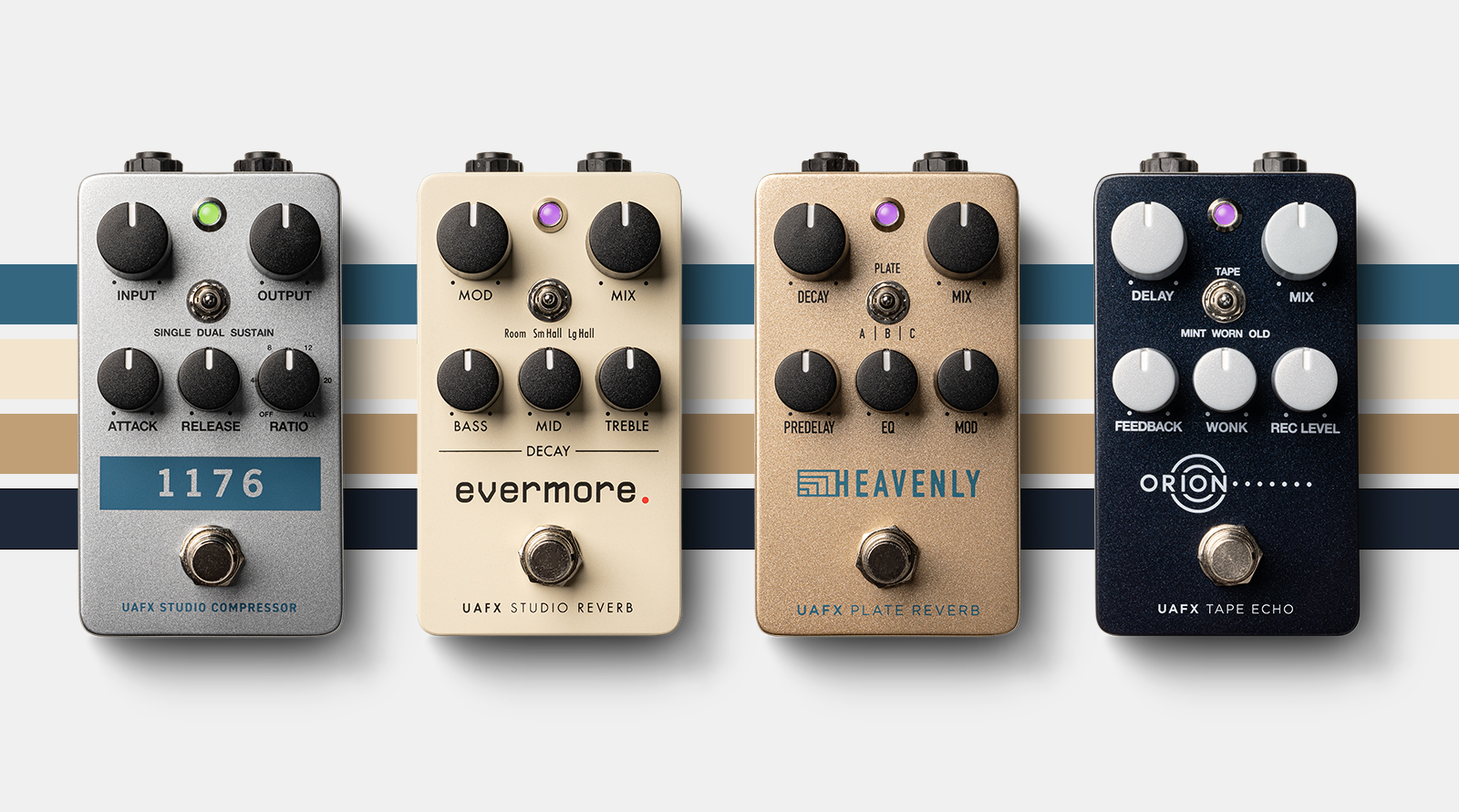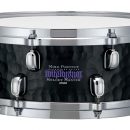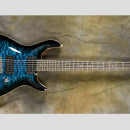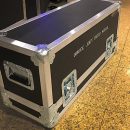 We have definitely hit the golden age of the guitar effects pedal. New manufacturers are popping up everywhere, and effects are being created (and re-created) to explore the unknown and travel the never-ending road to create something new. Along with this explosion, our pedal boards and racks have become extremely overgrown and heavy. Thank goodness technology is getting better — designers are building things smaller without sacrificing tone, and Mooer is doing a great job in that regard.
We have definitely hit the golden age of the guitar effects pedal. New manufacturers are popping up everywhere, and effects are being created (and re-created) to explore the unknown and travel the never-ending road to create something new. Along with this explosion, our pedal boards and racks have become extremely overgrown and heavy. Thank goodness technology is getting better — designers are building things smaller without sacrificing tone, and Mooer is doing a great job in that regard.
The Mooer Micro Series effects pedals are extremely compact, lightweight, and—as the ladies would say, “kinda’ cute.” Now that you’ve downsized your rig to a lunchbox-sized amp, you can miniaturize your pedalboard, while still preserving your big tone. The Green Mile Overdrive delivers some familiar overdrive tones in a tiny package, while the ShimVerb delivers some cavernous sounds that are far greater than its diminutive size.
| Category | Value | Rating | ||||
| Features | 20% |
|
||||
| Usability | 25% |
|
||||
| Sound | 25% |
|
||||
| Documentation & Support |
10% |
|
||||
| Price | 20% |
|
||||
| OVERALL RATINGS: Green Mile Overdrive = 3.2, which earns it a WIHO Award! ShimVerb Digital Reverb = 3.5 3.6 stars or better: Outstanding, WIHO Award 3 stars or better: Worth considering 2 stars or better: Suited to specific needs 1 star or less: Not recommended |
||||||
The compact size has its pluses and minuses: there is no room for an internal battery, so you’ll have to rely upon an external power supply. But if you’ve been wondering exactly how you can fit just one more effect onto an overcrowded pedalboard, Mooer definitely makes it easier to answer that question.
Features
Moore ShimVerb Digital Reverb PedalThe Mooer Micro Series Pedals provide excellent features in a very compact pedal design. The effects, manufactured in China, are housed in a forged metal casing with a screw-on back plate, and are light in weight not only due to size, but also due to using a thin gauge metal. Each pedal contains a mini toggle switch for effect selection, two mini control knobs for adjusting Level and Tone/Color, one large control knob for the main control of the individual effect saturation, an LED to display the On/Off effect status, Carling-style footswitches, and ¼ inch input/output jacks. Due to their diminutive size, there’s no room for a pedal. Each effect unit requires an AC adapter or other 9V DC (center negative) power source.
The Green Mile Overdrive contains the following features:
- Effects Modes: Warm and Hot
- Level control: Output
- Tone control
- Overdrive control knob
- True Bypass
The ShimVerb Digital Reverb contains the following features:
- Effects: Room, Spring, and Shimmer
- Level control: Mix of wet/dry signal
- Color: Control of the effect coloration/presence
- Decay control knob
- True Bypass
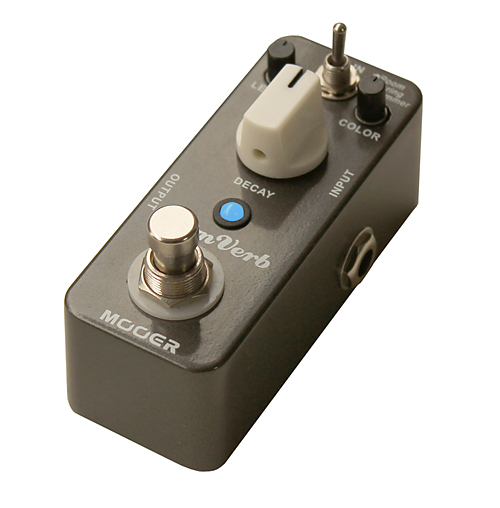 Usability
Usability
We found the Mooer Green Mile Overdrive and ShimVerb Digital Reverb Micro Series pedals extremely easy to navigate – pretty much a plug and play application with slight tweak of the controls to meet your personal taste. Both pedals have the same basic layout of controls but with different functions.
The Mooer Micro Series pedals each come in different colors. The Green Mile Overdrive is a fitting light green and the ShimVerb Digital Reverb is a shimmering grey. The control markings and lettering on the pedals are all white, which was easy to read on the darker grey background of the ShimVerb pedal but not as defined on the light green background of the Green Mile pedal. Overall, though, visual identification and markings were easily read.
The mini toggle switch on both effects pedals provided an easy selection of each effect setting. We could easily see the position of the switch in relation to the effect selection. The switch was easily accessible at the top front of the casing keeping it as far away as possible from the footswitch to protect from any accidental or unintended changes.
On each side of the toggle switch, there are two mini control knobs. We found the mini knobs to be small, but tall enough to grasp of and make desired changes. The pots of the mini control knobs are tapered, helping to retain their settings once dialed in (and considering their function, they shouldn’t need constant tweaking, so easy access isn’t really needed).
The LED is strategically placed above the footswitch for visual On/Off status, but it also provides the necessary spacing between the footswitch and controls to help avoid any unintended control changes from a misplaced footstep.
Some players will find that the compact size of these units provides huge benefits when considering pedal board real estate and weight. But for others, the small size can also have its disadvantages, especially if you like to tweak knobs in real time during performance instead of set-and-forget operation.
With the Mooer Micro Series pedals, you’ll need an external power supply since the pedals are far too small to accommodate an on-board 9V battery. We had no problem using popular BOSS PSA and Voodoo Labs Pedal Power 2 Plus power supplies.
In addition, these pedals are so compact that the input and output jacks are arranged in a staggered layout—there’s just not enough room for the jacks to be directly across from each other in the metal housing. Keep that in mind when designing your pedalboard/cable layout.
Sound
We tested the Green Mile Overdrive and ShimVerb Digital Reverb Micro Series pedals using a Gibson Les Paul and a Fender Telecaster pluged into the front end of a variety of amps: a mid ‘70s Marshall Super Lead 100, a Mesa/Boogie Lone Star, and a Bogner Ecstasy. In all applications, the pedals produced excellent effects with no unwanted noise and without tone discoloration when in the bypass/off position.
True to its name and color, the Mooer Green Mile Overdrive pedal provided the vibe of a tube screamer, or a vintage amp with the tubes saturated enough to give you that slightly overdriven crunch. In either setting—Warm or Hot, we were able to dial in excellent tones from crispy crunch to warm and fuzzy. This isn’t the right overdrive pedal for metal players, but country and blues guys will be right at home with it.
With the toggle switch set to the Hot setting, the Level set to approximately unity gain (9:00), and the Tone set at 2:00, we were able to get a nice variety of crunchy tones. Depending on the Overdrive setting, we achieved your basic country crunch at the very low setting as well as that classic, rockin’, in-your-face crunch ala Pete Townshend. The tone control was very effective in providing a dark, yet distinguishable warm tone as well as a high-end, cutting, edge depending on your taste and application.
With the toggle switch set to the Warm setting, Level set to about unity gain (1:30), and the Tone set at 2:00, we were able to get a variety of sustaining overdrive tones. At the low setting of the Overdrive control, there was the ever so slight, smooth touch of sustain allowing each note to bloom with either the humbucker or single coil pickup configuration of our guitars. With the Overdrive control totally cranked, we were able to achieve a heavy blues/rock sustaining overdrive while maintaining the warmth and articulation of every note. Sustain remained smooth throughout the entire range of the Overdrive control knob.
The Mooer ShimVerb Digital Reverb pedal is one jam-packed reverb pedal. In testing this pedal, we found the Reverb effects capable of providing almost every type of coloration you can think of ranging from subtle to cavernous to down-right alien-like. Depending on the settings—which are very sensitive, the slightest adjustment made a big difference.
With the toggle switch set to the Room setting, Level (mix) set to about 9:00, Color set at 10:00, and the Decay set wide open, we were able to get a warm sounding Reverb with a slight detection of shimmer. Turning the Level up made the signal as wet as you would like to the point where all you here is the wet signal. This also added to the depth of the room. Turning the Color control up provided additional high-end presence in the effect. We found the low settings provided more of the Reverb effect we’re used to hearing in our guitar amps, where increasing any of the control knobs allowed us to create a highly customized reverb sound.
With the toggle switch set to the Spring setting, Level (mix) set to about 9:00, Color set at 10:00, and the Decay set to 2:00, we were able to get a very realistic sounding spring Reverb. The sound most reminded us of tones heard in the Rockabilly genre. Turning the Level up not only increased the effect depth to the point of eliminating any dry signal, but it also added to the length of the spring. Turning the Color control up provided additional high-end presence and again, we found the low settings to provide more of the Reverb effect we’re used to hearing from a spring reverb. In using the spring reverb setting, our rule of thumb would definitely be “less is more.”
One of our favorite settings in the ShimVerb is the Shimmer setting, which attempts to deliver a little bit of that classic Eventide studio love. With the toggle switch set to the Shimmer setting, Level (mix) set to about 9:30, Color set at 10:00 and the Decay set to 12:00, we were able to get a very shimmering, endless cavern type of reverb that also provided additional note harmonics throughout the decay. By increasing the Decay time, the shimmer seemed to bloom at the front end after the initial note/chord strum, but as it cycled and the decay time came closer to its end, the level and drop off was extremely smooth and provided an excellent fade. The Shimmer setting provided a very dreamy, airy and magical effect. If your amp already has a nice reverb, this setting alone might make you interested in this pedal just for special effects on dreamy, clean passages.
Documentation and Product Support
The documentation for the Mooer Green Mile Overdrive and ShimVerb Digital Reverb micro pedals are nearly identical. Each come with the same basic Owner’s Manual outlining five main areas: Precautions: Do’s and Don’ts in taking care of your unit, Main Features: a basic overview of the unit, Effects Explanation: Specific functions of the effects toggle switch settings, Panel Instruction: A functional description of each panel knob/button; and Specifications: basic information pertaining to power source, impedance, connection sizes, weight and measurements of the unit.
The only information we found lacking were some sample settings and suggestions for use in the signal chain. It’s usually helpful to get the creator’s view on how the unit should be used for optimal performance, and to also have a few descriptive examples to test out.
Mooer Audio has a website, but it only contains minimal product information.
Price
The Mooer Green Mile Overdrive and ShimVerb Digital Reverb (MSRP $99 each) sell for $88 online, very cost-effective compared with other pedals on the market today. Considering the size of the units from a space savings perspective and the high-quality tone delivered, the Mooer Micro Series effects line is worthy of your consideration when shopping for some new pedals.
Contact Information
Osiamo LLC.
www.osiamo.com
| Evaluation Short-List |
|

